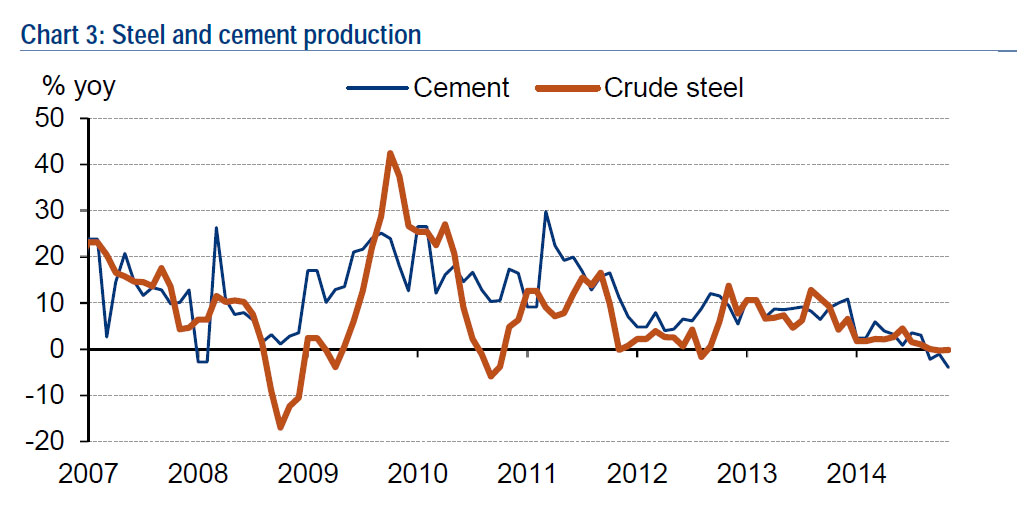From the Globe and Mail comes a useful forecast for Chinese steel:
Yang Zengkui climbs a hill behind his small restaurant on the industrial outskirts of Shijiazhuang. Under a blue sky that was once rare here, he looks out over China’s Cement Alley. Twenty, maybe 30, cement plants are visible. It’s hard to count them all: tucked into hillsides, standing tall beside a reservoir, wedged between wheat fields.
Easier to count is how many are still operating.
“Two,” Mr. Yang says, squinting against the sun. The rest are closed, some already razed and reduced to pits of wrecking ball rubble.
Mix together limestone, calcium, silicon and a few other ingredients at 1,500 C and you have cement. You also have one of the single most important ingredients in China’s remarkable rise.
Factories built China’s exports to the world. But cement built China: the vast forests of high-rises that populate its new cities, the innumerable roads and bridges that connect them and the endless bullet-train lines that propelled the country’s race away from poverty. China famously used more cement in three years than the U.S. in the entire 20th century.
But as China’s economy falters and its leadership scrambles to find new foundations for growth, cement’s seemingly unstoppable reign is suddenly in question. This year, for the first time since 2000, Chinese cement output is falling. In April, cement output fell 7.3 per cent from last year, and the decrease appears to be gaining speed. To date in 2015, cement is down 4.8 per cent, according to the National Bureau of Statistics of China. Prices in some places have been cut in half, sapping momentum from an industry that until recently enjoyed 11-per-cent profit rates. Now, the industry says most companies in northern China are losing money.
It’s a startling change. Even last year, Chinese cement output was up 1.8 per cent, capping a roaring expansion that saw China rise from just over a third of the world’s demand in 2002 to nearly two-thirds in 2012, when it used 27 times more cement than the U.S.
The most recent years were so ebullient that Gao Zhi calls it the “crazy time.”
Now it looks to be over, said Ms. Gao, the dean of the cement industry consultancy at the China Development Strategy Institute for Building Materials Industry, which both helps set national policy and monitors the industry. She uses a pen to sketch a line graph that rises quickly before levelling off and then plunging. It’s meant to show concrete demand over time. She points to the apex. China is now here, she says, and may experience a brief plateau. Over the next two decades, she expects a big decline. “The fall in demand could be 30 per cent, or even 50 per cent,” she said.
It’s no outlier prediction: The Chinese industry has studied places like Japan and Taiwan, and discovered that “from peak to trough, the difference in demand could be 50 per cent or so,” said Chen Bailin, a deputy director at the China Cement Association. “But as for whether that will take 10, 20 or 30 years – that’s hard to say.”


